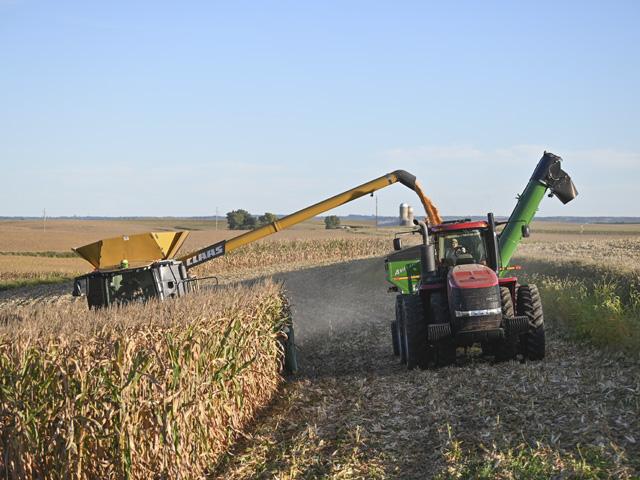Stable Cash Rents Ahead
Farm Strong - Stable Cash Rents Ahead
Cash rent negotiations between farm tenants and landowners will be tough again this fall as farmers face negative cash-flow in 2021. Ad hoc federal payments in 2019 and 2020 kept many farmers at, or above, breakeven. But, Gary Schnitkey, ag economist at the University of Illinois, believes the future is uncertain.
Profit projections for highly productive farmland in central Illinois in 2021 indicate farmers could pay $222 per acre in land rent and break even. But, this is an area where average cash rents run $275 per acre.
"The trend in cash rents is to stay the same," Schnitkey explains. "However, there is a credible argument they should be $10- to $20-per-acre lower in some cases, particularly in Iowa, where yields will be lower. Most of Illinois is looking at good yields."
Those Illinois numbers are for a farm that is 50% corn and 50% soybeans, with trend yields of 217 bushels per acre (bpa) for corn and 68 bpa for soybeans. They also reflect a cash price of $3.40-per-bushel corn, $8.90-per-bushel soybeans and $30-per-acre total from a price loss coverage (PLC) government payment ($60-per-acre corn, $0-per-acre soybeans). It does not factor in any other government payments in 2021.
CASH RENT OUTLOOKS MIXED
Doug Hensley, president of real estate services, Hertz Farm Management, Nevada, Iowa, predicts cash rents will be neighborhood-specific for 2021. Across central Iowa, a derecho (strong horizontal wind) flattened many fields and slashed what had been expected to be good yields.
P[L1] D[0x0] M[300x250] OOP[F] ADUNIT[] T[]
Ben Riensche, who farms in northeast Iowa near Jesup, says the corn and soybean markets are still below breakeven for him, with only a slight bounce this fall. "Government payments help some, but nothing like the $300-per-acre revenue declines coming from the decrease in the value of our corn crop," he says, comparing a 20 to 25% drop in yield and a meager 6 to 7% bounce off the bottom in prices.
Average cash rent in Iowa in 2020 was $222 per acre. Northeast Iowa had the highest average cash rents, at $248 per acre. Calculating rents per bushel yield, Iowa's cash rents in 2020 ranged from $1.04-per-bushel corn yield to $1.22 per bushel.
Barry Ward, ag extension economist at Ohio State University, concurs there are going to be pockets with a lot of pressure on cash rents.
"Northwest Ohio saw excessive rainfall last year with a lot of acres not getting planted," he reports. "This year, parts of the same area suffered a drought. On the whole across the state, I would guess rents for 2021 won't see much change from this year."
In western Ohio in 2020, cash rents for top-producing farmland with average corn yields of 216 bpa were $242 per acre (down from $247 in 2019). Cash rent per bushel of corn yield averaged $1.12.
Ben Syfert, an agricultural banker with First Mid Bank and Trust, in Arcola, Illinois, says looking toward 2021, he expects cash rents to be flat. At press time, he was reporting average to better-than-average crops in east-central Illinois across Champaign, Coles, Douglas, Edgar and Moultrie counties.
"Decent yields and better prices really make a difference to the bottom line," Syfert adds. "While the overall trend is steady, on larger tracts that attract more interest we might see a slight increase, but there are a couple of young farmers in the area that some landowners are interested in helping them get established and are willing to help them out."
RENTS FACTOR IN PAYMENTS
In September, Coronavirus Food Assistance Program 2 was announced and is meant to help farmers who continue to face market disruptions and costs associated with the pandemic. The program should be of help in Illinois, Schnitkey says. "We'll get by, but that is premised on high yields and federal aid."
The federal government kept farmers afloat in 2020, according to University of Illinois calculations. Operator and land return is projected at $297 per acre, with $32 coming from ad hoc disaster payments. Paying $275 average cash rent, a farm operator loses $10 per acre without the federal aid this year. With the federal aid, the farmer's return is projected to be just $22 per acre, not a lot of cushion for the coming year.
Ohio State's Ward notes government payments also tend to get capitalized into rent payments. "My concern is they are becoming baked into the psyche of farm operators and landowners. Everyone is expecting government payments now if prices don't improve."
That may not hold true in a nonelection year, Ward warns. "Although I don't expect cash rents for 2021 to change much, I do think land rents should go lower in the next two to three years given current cost structures and price levels. Without government payments, profit levels do not support current cash rents."
[PF_111520]
(c) Copyright 2020 DTN, LLC. All rights reserved.




